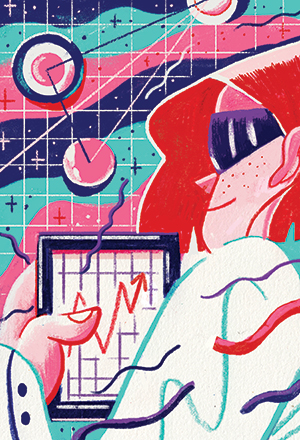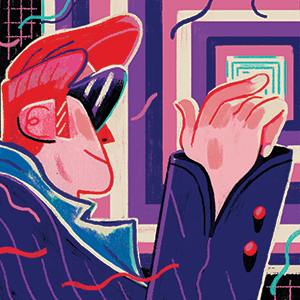[templatera] Most children grow up playing board games, like Battleship, Monopoly and Clue, among others. For today’s workforce, mainly millennials, now the most populous generation in the workforce, those board games were supplemented with video games as well as mobile games, all of which provide peer-to-peer bonding along with enhanced learning opportunities thanks to the interactive nature of playing games. Most adults today play those same games with their kids — in addition to new technology-based games — for the same purpose. Games are a big part of our lives.
That’s why, as business leaders, it is important to encourage that more games be played inside of our organizations as a way to help leaders conceptualize the complexity of today’s business environment and find solutions to their most pressing problems.
Many companies are experiencing significant leadership gaps and an insufficient leadership pipeline, primarily due to the increasing pace of change in the global economy thanks to the rapid acceleration of technology, globalization and other factors. In an October 2016 Harvard Business Review article, “The 5 Elements of a Strong Leadership Pipeline,” Josh Bersin, principal and founder of leadership research and consulting firm Bersin by Deloitte, referenced data showing that nearly 90 percent of executives rated “strengthening the leadership pipeline” as an urgent issue. He further said that leadership development investments also can improve employee retention. Because of this, companies increased spending 10 percent last year to $14 billion to prepare “ready now” leaders to step into a new level of responsibility. Similarly, “2016 Best Companies for Leaders,” a December 2015 article in Chief Executive, reported that when doing a 10-year performance comparison, the top 15 percent of the best leadership development companies have a 111 percent market capitalization growth versus 64 percent for the bottom 15 percent.
So, why don’t more companies use games for leadership development?
According to a 2015 report by Development Dimensions International, a human resources consulting firm, only 37 percent of companies use a formal program to develop a talent bench for a smooth leadership transition. This is because the money spent on other methods does not have a positive return on investment, as only 28 percent of businesses claimed to be highly effective, according to a June 2014 article by research firm Institute of Corporate Productivity, “4 Ways to Take Global Leadership Development to the Next Level.” Considering only a quarter of human resources leaders think their company leaders are “excellent” or “very good,” according to a June 2015 American Psychological Association article, “The Corporate Family Model of Leadership Development,” and a healthy percentage of others believe their leadership development programs are ineffective — essentially a waste of money — it’s time to try something new. Games are a great place to start.
Because the shortage of leaders is a critical factor in organizational growth and current methods aren’t effective, business leaders must find new sources of innovation to properly build a leadership pipeline. For these innovators, there is an increasing demand to maximize learning and leadership development technology to create a competitive advantage. For organizations that want to see behavior change among their top decision-makers, to develop good strategists who can build competitive advantage in a complex and dynamic business environment, investing in gamification for leadership development is a potentially potent tool at their disposal. Still, this isn’t the same as having leaders direct their corporate learning departments to create self-paced e-learning. On the contrary, this requires that leaders working to develop a classroom-based, high fidelity business simulation designed to help C-suite executives conceive solutions to real scenarios businesses today face.
Children play games on their smartphones or tablets that look better than many of the antique spreadsheet-based games business leaders use today. When it comes to games for leadership development, modern technology demands tablet touch interface, 3-D visualization and wireless backups.
To provide a visual classroom description, picture participants sitting at small group tables serving as a company’s executive team. The competing teams start with the same financial and human capital, and they then collaborate internally while they compete externally to determine where to best allocate their resources. They start by deciding on a team name, and their decisions amplify from there as they create a multiyear strategy prioritizing a company’s actions across departments with functions. It is challenging and high pressure, to be sure, but it is also engaging.
Furthermore, instead of a game based on a company’s present industry, participants need to step outside of their comfort zone so they can focus on the leadership lessons each game provides. Participants don’t get caught in industry specifics, like incorrect product pricing in the game, either. Instead, leadership development games incorporate business dynamics like strategic opportunities and competitive threats to help players stay agile and flexible as they determine contingency plans for their company.

Typically, individuals in leadership development games or simulations are promoted for self-achievement; yet, they need a holistic company perspective once they are in a leadership role. With each game participant playing a specific leadership role within the business, the group can see cross-functionally to develop mutual accountability as part of a high-performing team.
Participants will also ideally play a role on their tablet where they don’t have subject matter expertise, like an HR expert assigned to finance. Sometimes, participants will have an opportunity to play multiple roles within one game, so they can gain a broader perspective. This varied approach is more influential than a small group crowded around one laptop from a learning design perspective, as the department interdependencies highlight the systemic impacts from decision-making and help make the experience more like situations business leaders are likely to encounter during their day-to-day jobs.
To be sure, these leadership development games should not be played in isolation. Instead, business leaders should aim to support additional learning curriculum that is configured to the organization’s competency model as well as its course learning objectives as identified during the needs analysis phase of learning design. After configuration, the curriculum should be customized with business-specific examples for the company or industry. This curriculum wraps around the game, so participants can practice what they learned while playing — a learn-by-doing approach in a safe environment.
The curriculum also has to simultaneously address high-priority corporate needs as well as personal development opportunities for each participant. Each participant has unique traits — competency, proficiency and job — which require an individual learning approach. Finally, many companies struggle between offering a program that addresses soft skill intangibles and hard skill tangibles — the program as it pertains to leadership development games and simulations should strive to address both.
While the risk-free game environment fosters exploration and innovation, immediate performance feedback during the game can show participants the cause and effect of their strategy execution and business decision-making. For the game’s learning lessons to transfer back to the business, it must be a high fidelity experience, meaning it simulates the day-to-day business decisions leaders make accurately. For instance, the immediate financial influence of a given business decision should reinforce key lessons for faster acquisition, better accuracy and higher retention of information as well as an opportunity to make behavioral adjustments based on what the leader learned. Just like the real world, each team is trying to increase shareholder value, improve strategic decision-making capability, adapt to changing circumstances and improve the current and future value of the business — and their decisions should have buy, sell or hold business implications.
Companies skeptical of the use of gaming for leadership development often say previous game experiences were fun, but they did not provide a learning impact. To counter this, a professional facilitator-led debrief helps business leaders reflect on their critical thinking, decision-making and mistakes. Game participants benefit from the focus, energy and interactions of a facilitator who catalyzes dynamic, responsive and respectful dialogue with peers. They can then engage and reflect on a concrete, real-life experience, form abstract concepts, as well as test the concepts by applying them in new situations.
Self-awareness is also foundational for transformational, resilient and authentic leadership. Leadership development games encourage participants to challenge themselves, question their assumptions, explore different perspectives and build leadership confidence as part of their wider leadership expedition. Because the facilitator is critical to helping participants extract important leadership lessons, that individual must be an experienced professional who understands business and leadership and is not just a game administrator. Those years of experience and expertise bring real, practical examples to the leadership and business lessons.

Moreover, learning assessments are also important to assess the value of a game-based simulation in leadership development. There are many great ones available in the market today, but many of the current program designs make participants feel like an appendage to the curriculum/game. Therefore, in addition to receiving game feedback based on team performance, there also should be an embedded situational judgment assessment to provide each participant in the game with an individual discovery into their specific inner strengths and development opportunities based on their in-game decisions.
By leveraging camouflaged real-world case studies, participants immerse themselves in job-relevant behavioral situations. These moments matter because they improve the assessment’s validity and authenticity, as participants recognize the situation is as realistic as their business environment.
Of course, learning without application is worthless. The key to behavior change is learning retention and application back on the job. In addition to the assessment, programs to measure in-game learning need time for intentional reflection so participants can document what actions they are going to take when back in their role.
These actions could be developmental or related to specific behavioral change. Creating a leadership action plan can facilitate learning retention and application as well as improve behavior change. Participants need an accountability conversation with their mentor, manager or coach to increase current performance as well as develop capabilities for future roles. Furthermore, there must be follow-up support and reinforcement for successful learning transfer and — perhaps most important — behavioral change that impacts business performance. The plan is where the real individual development value is unlocked and prepped to produce a positive return on investment for the company.
One example of a company who has successfully used the game-like simulations in its leadership development is Dell Inc., a firm I have worked with in the past. The company has robust development programs for its finance and accounting professionals in particular.
In the third year of the company’s Accounting Development Program, program manager Tracy Negrete was looking to incorporate a capstone experiential learning experience. “For this learning experience, our goal was to provide the global team an opportunity to work together to make strategic business decisions,” Negrete said. “Their technical accounting skills are strong and translating that into effective partnerships with the business strengthens Dell.”

Negrete designed the “learning by doing” content to include topics that focused on the reality of working in a global business with virtual and multigenerational teams that are striving to be ethical, strategic business partners and change leaders. For each of these topics, the supporting curriculum was aligned to the desired learning objectives, as well as wrapped around the game so that participants practiced what they had learned. Of course, some of the key learning moments occur when the application in the safe environment of the game is different than the expectations the company has for these leaders when operating in the business.
During the program debrief, one of the company’s finance leaders likened their experience to a recent global project with cross-functional impacts and considerable change management efforts, which further demonstrated the relevance of the game experience for the program participants.
Negrete received extremely positive feedback from the participants, including:
- “The simulation is fun and interactive! Keep it on!”
- “Relates training materials to real life examples. … Great in enhancing understanding.”
- “It’s not just plain theory (boring) but it’s very practical.”
- “Lot of examples from real world and Dell specifically.”
- “I liked the ethics session a lot and the way it was ‘tested’ in the game.”
Following the class session, program participants received individual assessment reports and met with their manager regarding their leadership action plan developed during class. As a result of what they learned within the game, feedback from finance leaders and the development of their action plan, the participants had a well-rounded learning experience using game-like techniques in leadership development.
As renowned scientist Albert Einstein once said, “Learning is experience. Everything else is just information.” Experiential learning incorporating games using realistic work situations for leadership development produces immediate results.
The interactive game-learning medium is a scalable method business leaders can use to enable new ideas, while providing “sandboxes” where erroneous behaviors do not have a costly downside. Leaders develop their environment analysis, decision-making skills and consequence reflection over multiple quarters of gameplay where they must collaborate and compete.
Still not convinced on the gamification of leadership development and its role in helping better prepare leaders in their quest to navigate and solve real-world business problems? According to a 2016 study by the Association for Talent Development and Institute for Corporate Productivity, “Experiential Learning for Leaders: Action Learning, On-the-Job Learning, Serious Games, and Simulations,” high-performing organizations use experiential learning nearly three times more than low performing organizations.
So, it can be a good thing when leaders play games.
John Gillis Jr. is president of LeadershipX, a leadership development advisory firm based in Austin, Texas. This article originally appeared in the March 2017 issue of Chief Learning Officer, Talent Economy‘s sister publication. To comment, email editor@talenteconomy.io.















